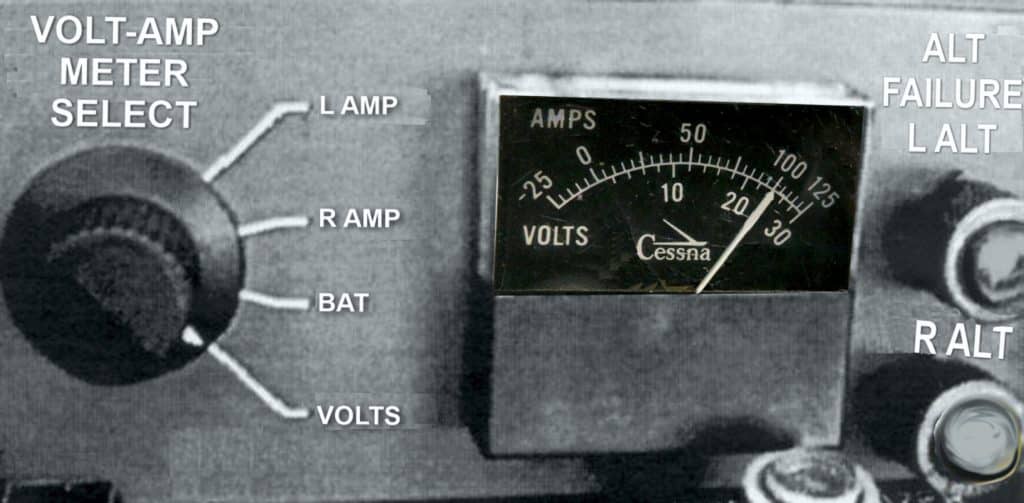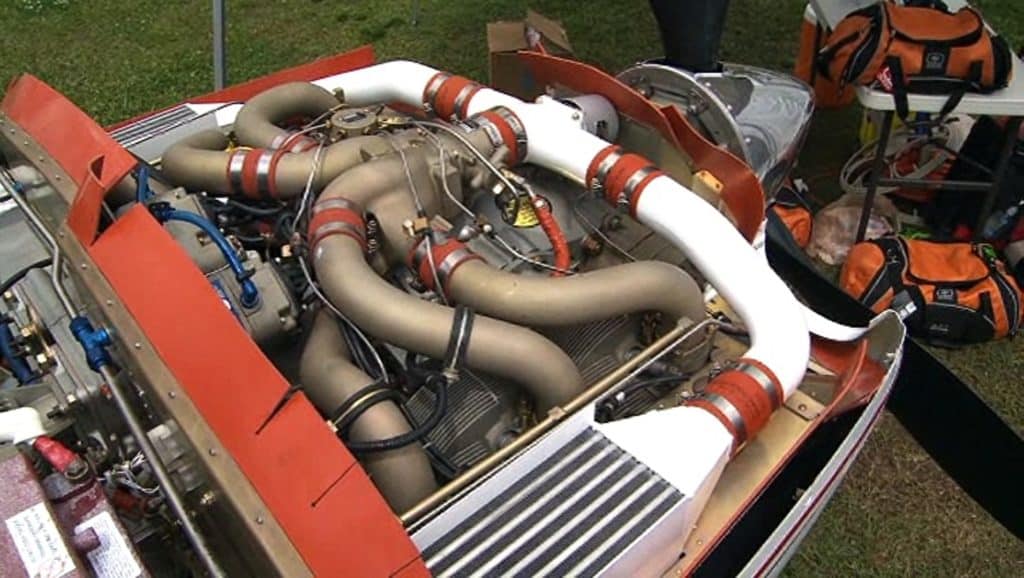The Perils of Trying to Fix a Problem You Haven’t Seen For Yourself
The phrase “trust but verify” was made famous by U.S. President Ronald Reagan in December 1987 after the signing of the Intermediate-Range Nuclear Forces (INF) Treaty with Mikhail Gorbachev. The phrase comes from a rhyming Russian proverb, “доверяй, но проверяй” (romanized as “doveryay, no proveryay”). More than three decades later, U.S. Secretary of State Mike Pompeo paraphrased the proverb when speaking about U.S.-China relations as “distrust and verify”—likely closer to the Russian proverb’s true meaning.
This proverb—particularly the Pompeo version—is just as applicable to aircraft maintenance as it is to arms control. Far too often in my experience, A&P mechanics attack an aircraft with tools in an attempt to fix an issue based solely on a squawk by a pilot or aircraft owner without actually verifying for themselves that the description is accurate. The result is often a lot of wasted effort, unnecessary expense and downtime, and frustration for all involved parties.
Let me illustrate what I mean with a couple of real-world examples…
Cessna 310 Volt-Amp Meter
Years ago when I served as the twin Cessna tech rep for the Cessna Pilots Association, I received a phone call from a fellow Cessna 310 owner who sounded a bit frantic. He explained to me that he was having a problem with his airplane’s volt-amp meter that his shop had been unable to fix.
He was referring to was the small analog meter located on the instrument panel behind the engine control quadrant. Next to the meter is a four-position rotary switch with positions laveled L. ALT, R. ALT, BAT, and VOLTS. Depending on the switch position, the meter shows the current output of the left or right alternator, the current into or out of the battery, or the main bus voltage. (I have the same system in my own airplane.)

The owner tole me that the volt-amp meter seemed to be working except when the switch was set to the R. ALT position. In that position, the meter always read zero. Since the R. ALT FAILURE light was extinguishing as soon as he started the right engine, the owner believed that the right alternator was working, and that the volt-amp meter must be inoperative when R. ALT was selected with the switch.
“I’ve had my plane in the shop three times to correct this,” the exasperated owner told me. “The shop has now replaced the meter, the selector switch, and the right alternator shunt, but the symptoms are unchanged. I’m now several thousand dollars into this with nothing to show for it, and I’m starting to lose faith in my mechanic. Can you help?”
Distrust and VERIFY
I knew this volt-amp system like the back of my hand, but before tearing into it further I felt compelled to VERIFY that the system was malfunctioning. So, I asked the owner to taxi his airplane to a run-up area and then call me from the cockpit so I could talk him through a few simple tests.
Awhile later, he phoned me. I could hear the engines running in the background. I asked him to run up the engines to 1500 RPM, to turn on the landing and taxi lights (to put a load on the electrical system), and then to tell me what the meter was reading in each of the four positions of the selector switch. He acknowledged my instructions and I could hear the RPM increase. I asked him what he saw on the meter.
“Left alternator is showing 25 amps. Right alternator is showing zero. Battery is showing slightly negative [indicating it was charging]. Bus voltage is about 28 volts.”
I asked the owner to switch the meter back to the R. ALT position. He did so, and reported that the meter was still reading zero in that position.
“Now turn the left alternator field switch to the OFF position,” I instructed, “and let me know if the meter reading changes.”
Moments later, the owner told me “Wow! The meter is now reading about 25 amps!” I detected a combination of amazement and confusion in his voice.
“Put the plane back in the hangar, and then call me so I can help you understand what’s going on,” I said.
Diagnosis
When the owner called back, I provided him with an explanation and a diagnosis.
“There’s nothing wrong with your volt-amp meter,” I said. “When you turned the left alternator off, the right alternator picked up the load and the meter displayed this correctly. This also shows that your right alternator is working fine.”
“Well, if the right alternator is working and the volt-amp meter is working, then why does the meter always read zero in the R. ALT position?” the owner asked me.
“Your alternators are supposed to share the load about equally,” I explained. “To do this, the regulators for the two alternators talk to one another via a wire that connects them together. This is called ‘paralleling’.”
“The regulators are adjustable, and they are supposed to be adjusted so that the two alternators share the load,” I continued. “Yours are obviously out of adjustment, causing the left alternator to do all the work and the right alternator to loaf along at zero output. That’s why you’re seeing zero on the meter.”
I told the owner that both regulators were located under the copilot’s seat, and that adjusting them to parallel properly was a simple procedure that shouldn’t take more than about 30 minutes to accomplish. “There’s a very good description of how to make this adjustment in the maintenance manual,” I added.
Failure to Verify
Let’s think about what happened here: The owner put his plane in the shop and told his A&P that the volt-amp meter wasn’t working when switched to the R. ALT position. The mechanic took the owner at his word—he trusted the owner’s diagnosis—and started throwing parts at the volt-amp meter system in hopes of fixing the problem. The result was thousands of dollars in parts and labor trying to fix a system that wasn’t broken, and a huge amount of frustration for the aircraft owner.
Now, suppose instead the A&P had asked the owner to join him in the cockpit of the Cessna 310 and demonstrate the problem instead of just describing it. I think it would have been very likely that the mechanic would have performed the same simple diagnostic procedure that I asked the owner to perform and would have quickly identified the problem as one with the alternator paralleling adjustment rather than a defect in the volt-amp meter. But, the mechanic never verified the diagnosis he received from the owner (“the volt-amp meter isn’t working”) and so went off into an expensive and frustrating blind alley.
The key takeaway here is that it is always better to demonstrate a problem to your mechanic than simply to describe it. If a mechanic can reproduce a problem, there’s a very good chance he can fix it. But, if you present a mechanic with a problem he can’t reproduce, then he’s reduced to guessing what is causing the problem, and such guesswork is notoriously unreliable.
Cirrus SR22 Rough-Running Engine
An eerily similar case of “trust and don’t verify” involved the Cirrus SR22 Turbo that was the subject of my August 2024 column (“Can’t Sign it Off?”). Readers may recall it involved an owner who experienced a rough-running engine, declared an emergency with ATC, and made a precautionary landing at an airport in northern New England.
The owner told the FBO’s Director of Maintenance that the engine had suddenly started running very rough and the engine page on the MFD showed that the CHT for cylinder #2 had risen above 400°F and appeared to be rising rapidly. The owner immediately reduced power to stop the thermal runaway and put the plane on the ground as quickly as possible.

Based solely on the owner’s description of the symptoms, the shop immediately focused on the #2 cylinder. A technician removed the intercooler, induction tube and top spark plug and inserted a borescope into the cylinder. The owner was then informed that the #2 cylinder had suffered detonation damage because “the exhaust valve was white” and would need to be removed and replaced. The shop further told the owner that the detonation was probably caused by an exhaust leak at the lefthand turbocharger, and that it would also need to be replaced.
To make a long story short, the owner ultimately asked my company to get involved. We reviewed the borescope images and saw no evidence of detonation damage in the #2 cylinder. We also reviewed photos of the turbocharger and assessed that the exhaust leakage was very minor, and was clearly unrelated to the engine roughness issue.
Ultimately, we instructed the shop to stop work immediately and to put the engine back together. They agreed to stop work but refused to reinstall the components they had removed from the engine. We wound up having to send an independent A&P to put the engine back together.
Diagnosis
It took the A&P a couple of hours to reinstall the engine components that the shop had removed. Once that was done, the A&P and the owner climbed into the cockpit and started the engine. Once the engine was warmed up, they performed a normal run-up which included a mag check. When they switched to the right magneto, the engine quit!
The A&P removed the top cowling and removed the vent plug from the right magneto. He looked into the mag through the vent plug opening while the owner rotated the propeller by hand. The magneto’s distributor gear didn’t move!
The problem with the engine became immediately obvious: The distributor gear in the right magneto had shed some gear teeth and was not rotating. This is a well-known failure mode of these magnetos, and results in spark plugs firing at random times in random cylinders. The result is always an engine that runs change-of-underwear rough, and sometimes causes cylinder damage due to pre-ignition. Fortunately, in this case, the pilot’s swift power reduction prevented such damage from occurring.
Failure to Verify
The A&P reported his findings to the FBO mechanics, and asked them whether they had seen something similar when they ran up the engine. The FBO mechanics reported that they never ran the engine, they were laser-focused on the #2 cylinder based on the owner’s report of elevated CHT in that cylinder.
We were frankly astonished to learn that the shop had never run the engine and had never done a mag check. All of us felt that it was elementary that when an owner brings and airplane to a shop and reports a rough-running engine, the first step the shop should take is to try to reproduce the problem by running up the engine.
The shop didn’t do this. They immediately attacked the aircraft with tools based solely on the owner’s verbal description that the engine was running rough and the #2 CHT was elevated. The result is that the shop completely missed the boat diagnostically, and were on a wild goose chase until we stopped them.
Had the shop tried to reproduce the rough-running engine—or had the owner offered to demonstrate the symptoms he was seeing—the outcome would have been very different indeed. This didn’t happen. A classic case of “trust and don’t verify.”